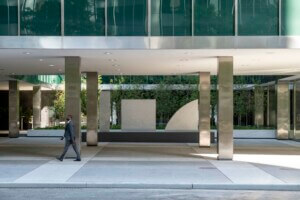The Project of Independence, now open at the Museum of Modern Art (MoMA), is steeped in longing for a return to a more hopeful time when architects made nation-states. The drawings, models, and photographs on display reflect a willingness on the part of mid-century architects to collaborate with nation builders, no matter the cost. The prevailing ideology of the time was that decolonization could only be achieved through modernization and industrialization, and the exhibition presents artifacts of this project of decolonization.
Yet, as a viewer, I found myself wondering what has changed, conceptually, in the last 60 years. How has recent scholarship on the decolonization and deimperialization of the lands and peoples in South Asia come to be an indictment, not only of colonial histories but also of current political regimes that orchestrate pogroms and land grabs? How has the fantasy of the nation-state become illegitimate, given its reliance on violence to maintain its legitimacy?
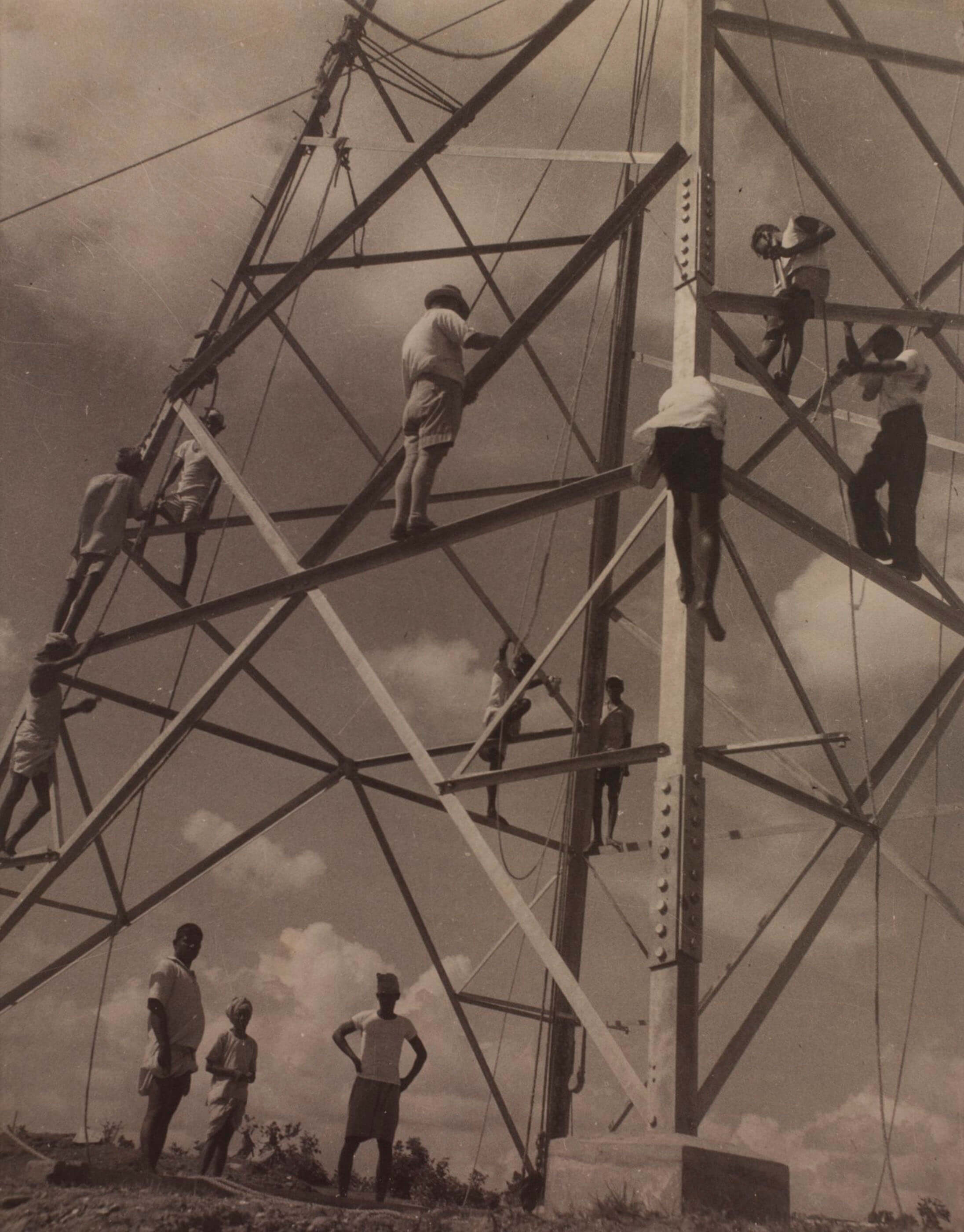
The first object one encounters before entering the show is a large reprint of Sunil Janah’s photograph of men climbing a television tower. This joyful celebration of technology covers the name of MoMA’s Philip Johnson Galleries, a tradition begun by Mabel O. Wilson and Sean Anderson’s 2021 Reconstructions. On the other side of this threshold, one finds a small photograph by Margaret Bourke-White, from her series on partition refugees making the journey across the India-Pakistan border. The image is less a document of the unfathomable violence and trauma of partition and more a metonym of the nation, emerging painfully from colonialism, headed toward a self-determined future. Rather than reckon with this history, The Project of Independence takes all the violence of colonial conquest and postcolonial nation-building and condenses it into an eight-inch rectangle. Partition wasn’t simply an event that produced the need for new buildings and new ways of living; it was a sampling of the vast legacy of violence that has accompanied both the colonial and postcolonial history of South Asia.
Curators Martino Stierli, Anderson, and Anoma Pieris manage to sidestep the multiple pitfalls of the genre. They stay away from the “modernity-tradition-identity” trope, opting for a thematic rubric ranging from institution building and industrial infrastructure to new urban arrangements. This conceptualization adheres to trends in scholarship, even though the narrative of forging a new national aesthetic lies just below the surface. Every so often a project seems smuggled in, perhaps for its beauty. A visitor might, for instance, pause at the lovely drawings of Valentine Gunasekara and Christopher de Saram’s Tangalle Bay Hotel (1972), wondering which theme they were currently immersed in, only to discover none. There is value to how individual countries—India, Pakistan, Bangladesh, and Sri Lanka—fall into the background as one peruses the projects on the walls and in the catalog, yet this too is a double bind. Eschewing national origins, Stierli et al. seem to make a case for a shared colonial history and possible postcolonial unity, yet this same gesture evades historical specificities, particularly the unsavory political contexts within which these buildings are uncomfortably embedded.
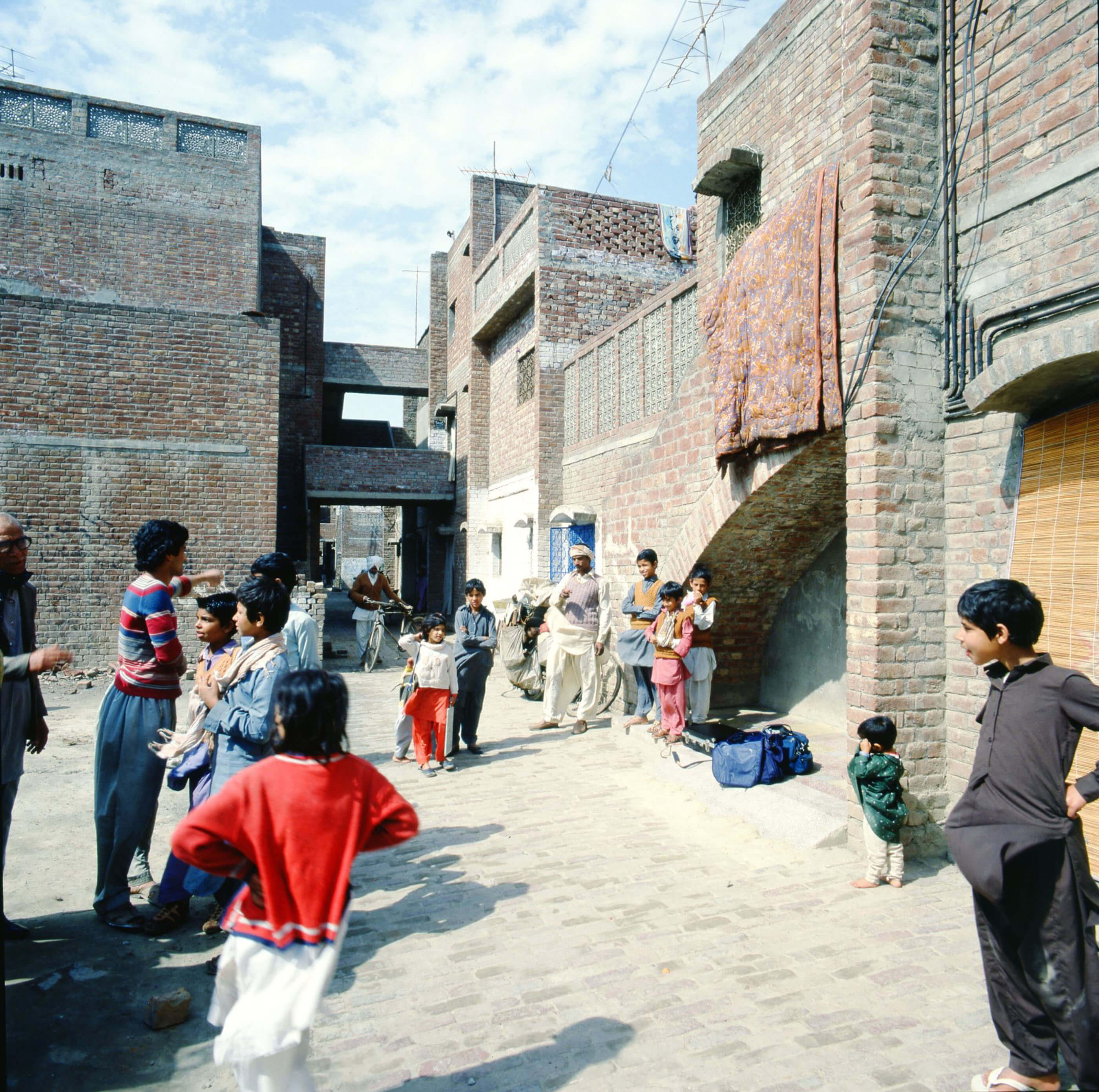
Acknowledging the exclusion of women common in exhibition-making, the curatorial team has been careful to include women practitioners such as Yasmeen Lari in the mix. Similarly, the show somewhat steers clear of the great-man approach, so that in place of Le Corbusier, we get his architectural amanuenses, including Minnette de Silva and Aditya Prakash. I recommend pausing in front of the beautiful drawing of Prakash’s Tagore Theatre (1962) and at an urban mobility study that indexes the lifelong work he did, institutionally and architecturally, to make Chandigarh a vibrant, living city. A government-produced documentary film about Chandigarh’s construction depicts the laborers who moved up and down ramps to pour the concrete that formed the Capitol Complex. That buildings are constructed by workers is a tautology; the real question here is, what are the multiple labors of architectural thinking and making that the myth of the solo creator has concealed? Le Corbusier is never dismantled as the origin story of Indian modernism; he is merely displaced onto his acolytes and into his buildings.
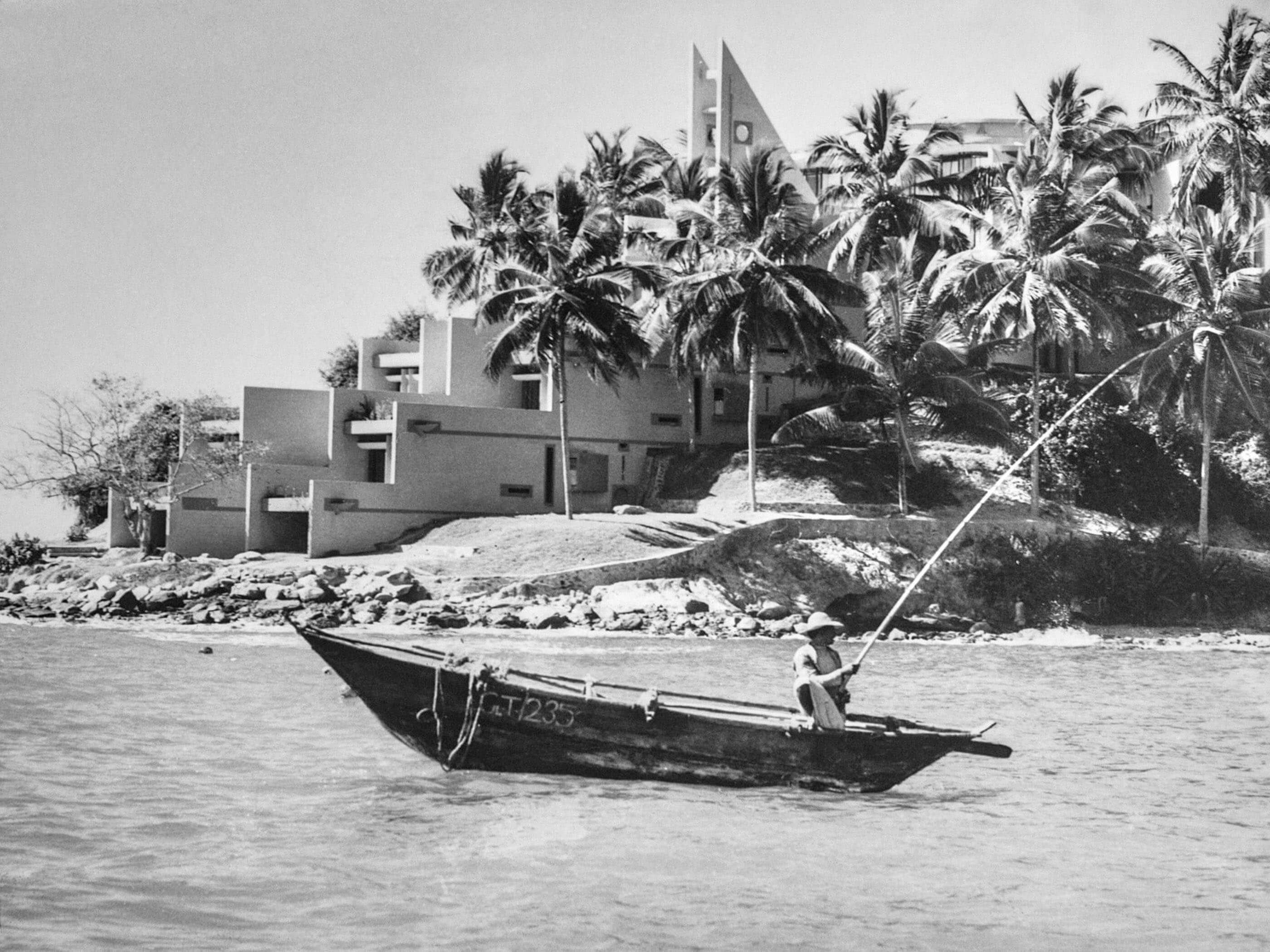
There are two accounts on which the exhibition does real institutional work, in conserving artifacts and producing new ones. I would be remiss not to mention the sheer pleasure of drawings and images that the survey puts together. One can only imagine the difficult task of collecting this material and mounting this exhibition in the context of a global pandemic. I know from my own work that India’s multiple lockdowns made navigating institutions more complicated than it already was. Even outside of the pandemic, anyone working in this time and region knows the pain of finding drawings alternately eaten by insects or destroyed by dust and neglect. Entire archives have been lost, especially when drawings were handed over to state bodies. The hope is that a show such as this makes scholarship possible by forging new networks and creating the conditions for accessing this history. But with this hope comes certain questions. Should the gallery’s role remain purely object-oriented, consigning the conceptual and historical work to catalogs? Must wall texts that draw on the archival and theoretical arguments of scholars read like Wikipedia entries? Although this tone is the standard for exhibitions, it does not have to be.
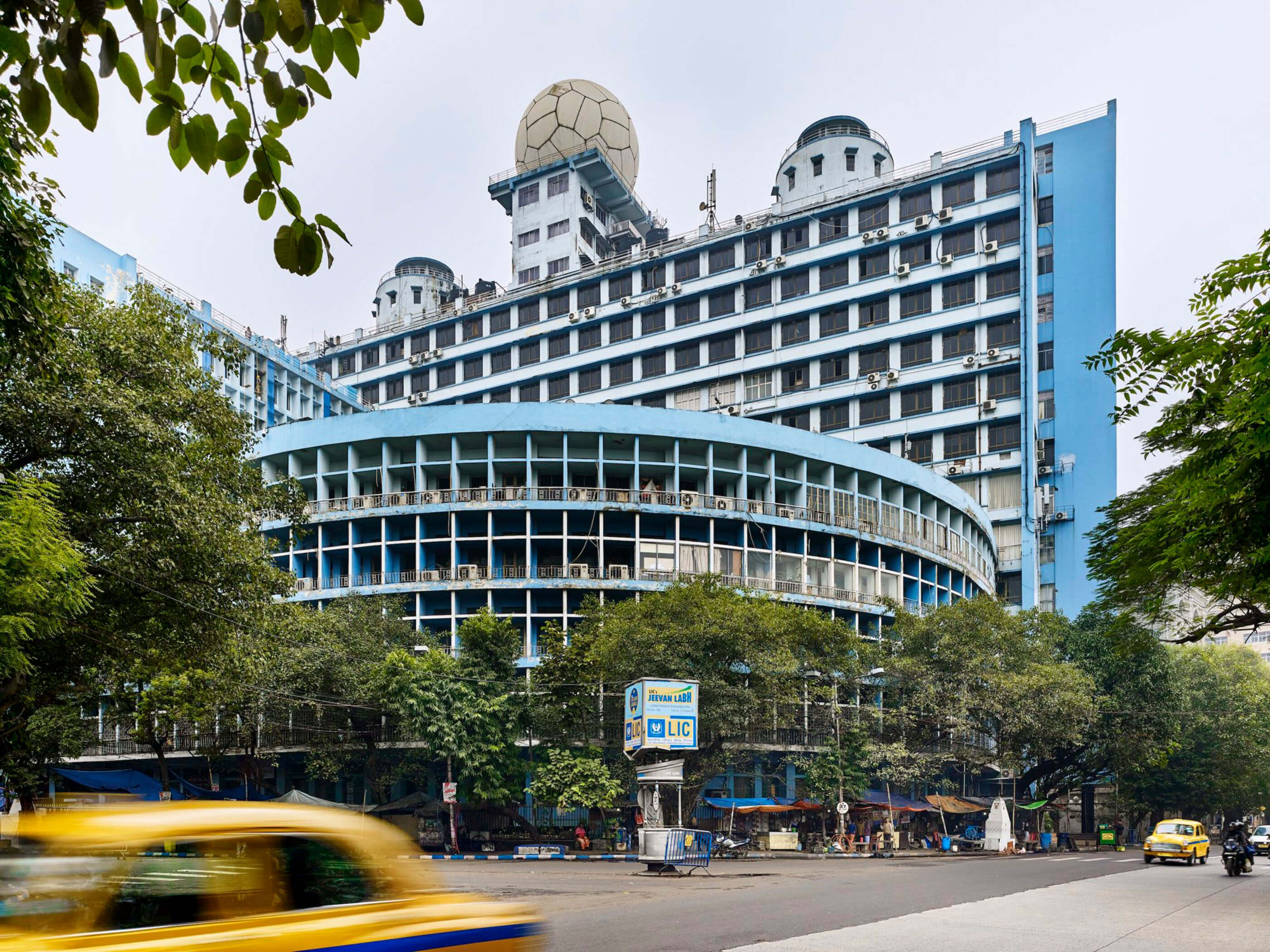
On the second front, the production of new material, Randhir Singh’s photos are beautiful. A particular favorite of mine depicts a reading room in Mazharul Islam’s public library at the University of Dhaka (1954). The contrast between the books on the wall (cloth and leather-bound tomes) and the books piled on tables (economically printed textbooks often designed for cramming for various exams) hint at the brutality of current regimes of education. A few masked students crop up here and there in Singh’s photos, the sole indication of a pandemic that uniquely affected construction laborers in the region. But the few representations of laborers in the exhibition don’t convey these kinds of structural exploitations. Then there are the wood models of buildings made by students from the Cooper Union in New York, which are wonderful. Yet, it is easier to outsource model-making to students than it is to actually decolonize the pedagogy of South Asian architectural history.
Full disclosure: Early on in the exhibition planning, I was invited to share some thoughts with the curatorial team, which has kindly included my name among a list of advisers at the back of the catalog. At the time, I commented that the moment was ripe to pull apart what South Asia is and how the current discourse on decolonization afforded the exhibition an opportunity to challenge the geographical and temporal determinism embedded in the narrative of independence. (India and Pakistan achieved independence in 1947; Sri Lanka in 1948; Bangladesh achieved independence from Pakistan in 1971.) To be clear, South Asia is a historically constituted region; various countries, peoples, and languages have been included and excluded from this geography, following shifting geopolitical currents. To that end, in presenting South Asia as a continuum, The Project of Independence underscores the ties that hold the region together more than the borders that separate them. Neither the exhibition nor the catalog is organized according to the four countries that were chosen to represent the region. Yet, how wonderful it would have been to see a project from Bhutan or Nepal or the Maldives. It is a travesty to disavow Afghanistan, but maybe even Myanmar and Iran could have been sneaked in.
My intention isn’t to extend the boundary of the political region that is South Asia by adding more countries and projects to a list. Rather, my point is that any serious attempt to decolonize the history of architecture should make clear the precarity and political violence involved in border-drawing projects and the politics of inclusion and exclusion they subtend. Likewise, the temporality of the exhibition, achieved by its neat bracketing of 1947 and 1985—the year the South Asian Association for Regional Cooperation was formed—perpetuates the myth of a break. Surely, there are strategies of display that acknowledge the momentousness of those beginnings without falling prey to the mythologies of origins.
Should you go see the show? Yes, of course. See it and enjoy the authentically hopeful architecture of nation-building. But know that the curatorial team cites decolonization, not as a postcolonial theoretical field, but as a specific historical event. In doing so, the exhibition doesn’t ask or answer questions as to what decolonization could possibly mean. Another possible model for a survey on post-independence architecture might seriously consider what the labor of decolonization would constitute theoretically, and what the reparations due would look like economically. In addressing the legacy of colonial violence and its confluence with modernism and industrialization, it would need to question whether architects were complicit in the immediate imperial turn of independent governments. Without pursuing these lines of inquiry, The Project of Independence is in danger of continuing neocolonial tendencies by valorizing heroic narratives of late architectural modernism in South Asia.
Ateya Khorakiwala is an assistant professor of architecture at Columbia University. She researches famine, infrastructure, and materiality in 20th-century India.
The Project of Independence: Architectures of Decolonization in South Asia, 1947–1985
Museum of Modern Art, 11 West 53rd Street, New York
Through July 2, 2022










